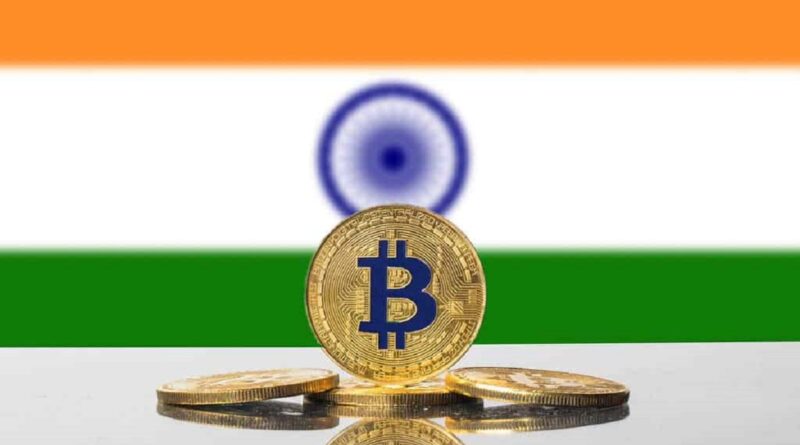Why India Needs a Clear Cryptocurrency Policy in 2025
Discover why India needs a clear cryptocurrency policy in 2025. Explore how regulatory clarity can boost innovation, protect investors, and position India in the global $2.3 trillion crypto market.
Introduction: India’s Crypto Crossroads
India, with its 107 million crypto users and a $6.4 billion market in 2025, stands at a pivotal moment in the global cryptocurrency landscape. Despite widespread adoption, the absence of a clear regulatory framework creates uncertainty for investors, businesses, and policymakers. With global markets embracing digital assets—evidenced by the U.S. approving Bitcoin ETFs and the EU’s MiCA regulations—India risks lagging behind without a cohesive crypto policy. This article explores why a clear cryptocurrency policy is essential for India to foster innovation, protect investors, and strengthen its position in the $2.3 trillion global crypto market.
The Current State of Crypto in India
Cryptocurrencies like Bitcoin and Ethereum are legal to buy, sell, and hold in India but are not recognized as legal tender. The Reserve Bank of India (RBI) has historically been cautious, citing risks to financial stability and monetary policy. A 2018 RBI ban on banks dealing with crypto was overturned by the Supreme Court in 2020, leading to a surge in trading. However, a 30% capital gains tax and 1% TDS on transactions above ₹10,000, introduced in 2022, have driven some activity to offshore platforms.
As of July 2025, India lacks specific crypto legislation. The Cryptocurrency and Regulation of Official Digital Currency Bill, proposed in 2021, remains stalled, leaving the market in a regulatory grey zone. The Securities and Exchange Board of India (SEBI) and the Financial Intelligence Unit (FIU-IND) enforce KYC/AML compliance, but the absence of a unified policy fuels uncertainty. A discussion paper on crypto policy, delayed from September 2024, is expected by July 2025, signaling a shift toward regulation over prohibition.
Why India Needs a Clear Crypto Policy
1. Fostering Innovation and Economic Growth
India’s tech-savvy population and 1.4 billion-strong market make it a potential hub for blockchain innovation. A clear policy could:
-
Encourage Startups: Support blockchain projects like Polygon ($MATIC), which saw a 40% increase in Indian wallets in 2025 due to government-backed initiatives.
-
Attract Investment: Regulatory clarity could draw global crypto firms, as seen with Binance’s $2.25 million fine for non-compliance, followed by FIU registration to resume operations.
-
Boost Job Creation: A report by Statista estimated India’s crypto market at $222.7 million in 2023, with potential for job growth in Web3, DeFi, and NFTs if regulated properly.
Without clear rules, innovation stalls, and talent migrates to crypto-friendly nations like Singapore or Switzerland.
2. Protecting Investors and Reducing Fraud
With $1.2 billion lost globally to crypto scams in 2024, India’s unregulated market is vulnerable:
-
Fraud Prevention: The Supreme Court in 2025 criticized the government for lacking a “clear-cut” policy, noting a “parallel under-market” resembling illegal hawala transactions.
-
Investor Safety: Clear regulations, including KYC/AML norms and exchange oversight, can protect India’s 107 million crypto users from scams like the Delhi firm’s ₹1,858 crore fraud case.
-
Transparent Taxation: The current 30% tax and 1% TDS push traders to unregulated platforms. A balanced tax regime could encourage compliance and reduce black-market activity.
3. Aligning with Global Standards
Global crypto adoption is accelerating, with the U.S. exploring Bitcoin reserves and the EU implementing MiCA. India’s cautious stance risks isolation:
-
International Collaboration: Economic Affairs Secretary Ajay Seth emphasized that crypto’s borderless nature requires alignment with global standards, as discussed in G20 forums.
-
Stablecoin Regulation: The upcoming policy paper may focus on stablecoins like USDT, key for remittances in India’s $100 billion diaspora market.
-
Competitive Edge: Clear rules could position India as a leader in the $7 trillion global digital economy, attracting institutional investors.
4. Supporting Financial Inclusion
Cryptocurrencies can enhance financial access for India’s unbanked population:
-
Decentralized Access: With 750 million smartphone users globally, crypto wallets can bridge gaps where traditional banking is limited.
-
Digital Rupee Synergy: The RBI’s e-Rupee, piloted since 2022, could coexist with regulated private cryptocurrencies, enabling faster, cheaper transactions.
-
Remittance Efficiency: Stablecoins could streamline India’s $100 billion remittance inflows, reducing costs compared to traditional systems.
5. Preventing Capital and Talent Flight
High taxes and regulatory uncertainty drive investors and businesses offshore:
-
Capital Loss: Between February and October 2022, $3.8 billion in trading volume shifted to international exchanges due to India’s tax policies.
-
Talent Drain: A 2018 RBI ban led to a brain drain of blockchain experts. Clear policies could retain talent and foster “crypto export zones.”
-
Market Growth: A regulated environment could keep India’s $6.4 billion crypto market domestic, boosting tax revenue and innovation.
Challenges of Regulatory Uncertainty
-
Market Risks: The Supreme Court noted crypto’s potential for illicit activities like money laundering, as seen in cases involving Bitcoin and Tron funding criminal networks.
-
Investor Confusion: Without clear rules, investors face complex tax compliance, with no loss set-off allowed under the 30% tax regime.
-
Economic Impact: Unregulated crypto markets could undermine the RBI’s monetary policy, affecting currency stability.
What a Clear Crypto Policy Could Look Like
India’s anticipated 2025 policy paper may include:
-
Asset Classification: Defining cryptocurrencies, stablecoins, and NFTs as Virtual Digital Assets (VDAs) with tailored regulations.
-
Multi-Agency Oversight: SEBI to monitor token trading, RBI for monetary policy, and FIU-IND for AML compliance.
-
Tax Reform: Lowering the 30% tax or allowing loss set-offs to encourage compliance.
-
Investor Protection: Mandatory KYC, transaction monitoring, and scam prevention measures for exchanges.
-
CBDC Integration: Aligning the e-Rupee with private cryptocurrencies for interoperability.
-
Global Alignment: Adopting FATF and G20 standards to ensure international cooperation.
The Global Context
Countries like the U.S., UK, and EU have advanced crypto frameworks:
-
U.S.: Approved Bitcoin ETFs and proposed a national Bitcoin reserve, signaling mainstream adoption.
-
EU: MiCA regulates stablecoins and exchanges, setting a global benchmark.
-
Switzerland: Clear rules have made it a blockchain hub, attracting startups and investors.India’s delay in policy formulation risks missing this global wave, as noted by industry leaders like CoinDCX’s Sumit Gupta, who advocate for actionable guidelines.
Conclusion
India’s 107 million crypto users and $6.4 billion market underscore the urgent need for a clear cryptocurrency policy in 2025. A well-defined framework would foster blockchain innovation, protect investors from fraud, align with global standards, and enhance financial inclusion. Without it, India risks capital flight, stifled innovation, and unchecked illicit activities. As the government prepares a discussion paper for July 2025, inspired by G20 and IMF inputs, the opportunity to position India as a Web3 leader is within reach. By balancing regulation with innovation, India can harness the potential of digital assets while safeguarding its financial ecosystem.




